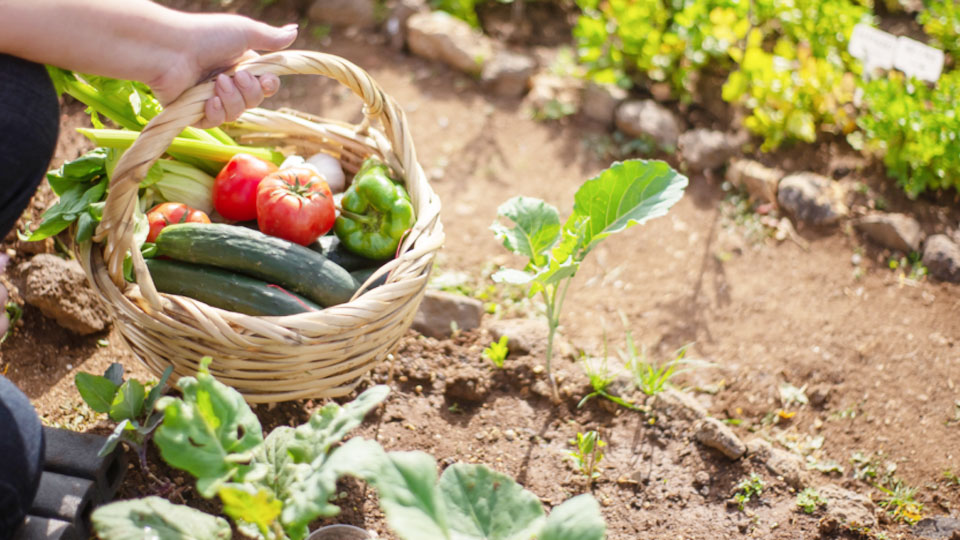When I first decided to start a vegetable garden, I had so many questions swirling in my head. Where should I plant? What should I grow? Will I be able to keep my plants alive? It was both exciting and intimidating. I’ve learned through trial and error that growing vegetables isn’t just about putting seeds in the soil.
It’s about understanding the process, staying patient, and loving every moment of it. If you’re new to vegetable gardening, don’t worry! I’m here to share everything I’ve learned to help you kickstart your journey.

Image by tennesseeace
Start with the Right Spot
One of the most crucial aspects of vegetable gardening is finding the right location. Vegetables love sunlight—most need at least six to eight hours a day. Look for a spot in your yard that gets ample direct sunlight and is protected from strong winds. If you don’t have much outdoor space, don’t worry. Containers on a sunny balcony or patio can work wonders too.
Another thing to consider is access to water. Choose a spot close to a water source because lugging a watering can across your yard can get tiring fast. Trust me on this one!
Understand Your Soil
Healthy soil is the foundation of a productive vegetable garden. Before you plant anything, take a moment to understand your soil’s condition. Is it sandy, clay-heavy, or loamy? Loamy soil, which is a balance of sand, silt, and clay, is ideal for most vegetables.
If you’re unsure about your soil’s quality, consider testing it. Many gardening centers sell inexpensive soil test kits, or you can send a sample to a local extension service. The results will tell you what nutrients your soil might be lacking and whether its pH level is suitable for growing vegetables.
For beginners, adding compost or organic matter is a foolproof way to improve your soil. Compost enriches the soil, improves drainage, and encourages earthworms, which are natural gardeners’ helpers.
Start Small
It’s tempting to dive into gardening with a big plot and lofty goals, but I’d advise starting small. A modest 4×4-foot garden bed or a few containers are perfect for beginners. Focus on growing a handful of vegetables you love to eat. This way, you won’t feel overwhelmed, and you can better manage your plants.
Some beginner-friendly vegetables include:
- Tomatoes
- Lettuce
- Radishes
- Green beans
- Zucchini
- Carrots
These are relatively easy to grow and can give you a quick sense of accomplishment.
Plan Before You Plant
One mistake I made early on was planting seeds randomly without a clear plan. It’s better to sketch out a rough garden plan before you start digging. Think about spacing—some plants, like zucchini, need a lot of room, while others, like radishes, can grow close together.
Companion planting is another helpful strategy. Certain plants, when grown together, can boost each other’s growth or repel pests. For instance, planting basil near tomatoes can improve their flavor and deter insects.
Water Wisely
Watering is one of the most common areas where beginners slip up. Overwatering can drown your plants, while underwatering can leave them thirsty. A general rule of thumb is to water deeply but less frequently. This encourages plants to grow deeper roots, making them more resilient.
In the early morning is the best time to water. It gives plants a chance to absorb the moisture before the sun gets too hot. Avoid watering in the evening as it can lead to fungal diseases.
For container gardens, keep in mind that they dry out faster than in-ground gardens. Check the soil’s moisture daily by sticking your finger an inch deep into the soil. If it feels dry, it’s time to water.
Feed Your Plants
Just like us, plants need food to thrive. While your soil might have some nutrients, most vegetables benefit from additional feeding during the growing season. Organic fertilizers or compost are great options for beginners. They’re less likely to harm your plants if you accidentally overdo it.
Pay attention to each vegetable’s specific needs. Leafy greens like spinach and lettuce prefer nitrogen-rich fertilizer, while fruits like tomatoes and peppers love potassium and phosphorus.
Manage Pests Naturally
I’ll be honest, dealing with pests was one of my least favorite parts of gardening, but it’s part of the process. Instead of reaching for chemical pesticides, try natural methods to keep pests at bay. Here are a few tips:
- Inspect regularly: Check your plants for signs of pests or damage.
- Encourage beneficial insects: Ladybugs and praying mantises are natural pest controllers.
- Use companion plants: Marigolds, for instance, can repel harmful insects.
- Create barriers: A simple mesh net can protect your plants from bugs or birds.
If pests do show up, identify them first. Often, you can find specific organic solutions tailored to the problem.
Harvest at the Right Time
Harvesting your vegetables at the right time is just as important as growing them. Picking too early can result in underdeveloped flavors, while waiting too long might make them overripe. Each vegetable has its ideal harvesting stage:
- Tomatoes should be firm and fully colored.
- Lettuce leaves can be snipped when they’re big enough to eat.
- Zucchinis taste best when they’re about 6–8 inches long.
Always use clean scissors or pruning shears to harvest. Pulling vegetables off the plant can sometimes cause damage.
Stay Consistent and Patient
Gardening is a rewarding activity, but it does require consistency. Make it a habit to check on your garden daily, even if it’s just for a few minutes. This way, you can spot any issues early, whether it’s pests, diseases, or plants that need watering.
Patience is key, especially as a beginner. Not every plant will thrive, and that’s okay. Learn from your experiences, and remember that gardening is as much about the journey as it is about the results.
A Simple Table to Help You Get Started
Here’s a quick reference guide to some beginner-friendly vegetables:
| Vegetable | Light Needs | Watering Frequency | Time to Harvest |
|---|---|---|---|
| Tomatoes | Full sun | Every 2–3 days | 60–80 days |
| Lettuce | Partial shade | Keep soil consistently moist | 30–45 days |
| Radishes | Full sun | Moderate, don’t overwater | 20–30 days |
| Green Beans | Full sun | Deep watering weekly | 50–60 days |
| Carrots | Full sun | Consistently moist soil | 70–80 days |
Conclusion
Starting a vegetable garden can feel overwhelming at first, but it’s one of the most rewarding hobbies you can pick up. There’s nothing quite like the joy of picking fresh vegetables you’ve grown with your own hands.
By starting small, staying consistent, and enjoying the process, you’ll find that gardening is a delightful way to connect with nature and nurture your own little slice of green paradise.
So, grab your gloves, get your hands dirty, and start your gardening journey today. Trust me, it’s worth every minute of your time!
FAQs
What vegetables are easiest for beginners to grow?
Tomatoes, lettuce, radishes, green beans, and zucchini are some of the easiest vegetables to grow for beginners.
How much sunlight do vegetables need?
Most vegetables need at least six to eight hours of direct sunlight each day to thrive.
Can I grow vegetables indoors?
Yes, many vegetables can be grown indoors if you have a sunny spot or supplemental grow lights.
How do I know if I’m overwatering my plants?
If the soil feels soggy or the leaves are turning yellow, you might be overwatering.
What’s the best way to improve soil quality?
Adding compost or organic matter is one of the easiest and most effective ways to improve soil quality.
Let me know if you’d like more tips or a follow-up article to dive deeper into specific gardening topics!

I’m Marissa Lynn, the proud author behind GardeningProperty.com! With a deep-rooted passion for all things green and growing, I’ve dedicated years to mastering the art and science of gardening.
From nurturing vibrant flowerbeds to cultivating thriving vegetable gardens, I love sharing practical tips, creative ideas, and proven techniques to help others create their dream outdoor spaces.